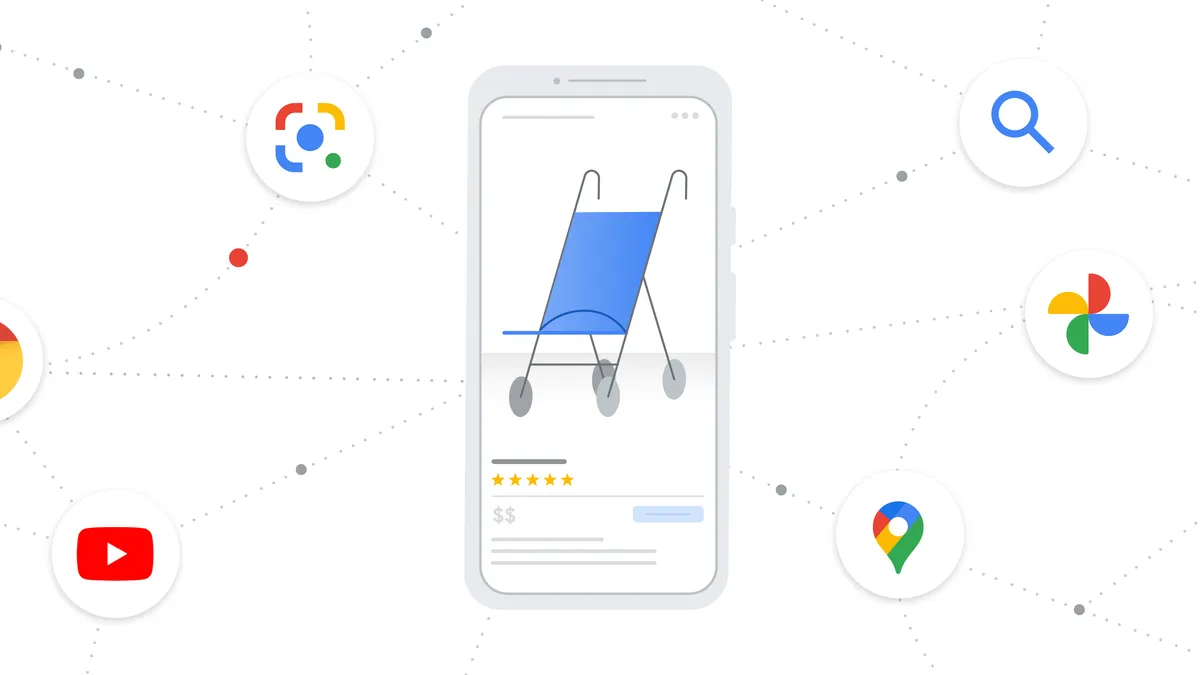Dive Brief:
- Google this week announced new expansions across its Shopping platform, according to a blog post. The post outlines key announcements President of Commerce and Payments Bill Ready made at the tech giant's annual I/O developer conference this week.
- Google will expand its partnership with e-commerce company Shopify's 1.7 million merchants, simplifying the process through which they can feature their products and be discovered on Google's mobile-first browsing tools. Google also unveiled its Shopping Graph technology, which uses AI to monitor the flux of products, sellers, brands, reviews and inventory information on the site, as well as make insights related to the data.
- Ready also announced tech that will make shopping easier for consumers, including a feature on Chrome that keeps track of their open shopping carts and an upgrade to Lens that searches screenshots for shoppable items. Together, these rollouts see Google looking to attract marketers with improved e-commerce capabilities.
Dive Insight:
As consumer adoption of e-commerce continues to accelerate amid the pandemic, Google is beefing up its Shopping platform, bringing in scores of new merchants, products and potential ad space. Shopify, which generated just under $3 billion in revenue last year — an 86% lift from 2019 — will be a key part of the update with its 1.7 million businesses, who will join the search engine via a new process that emphasizes quick product discovery. Removing obstacles for new merchants is a way for Google to expand its product inventory and appeal to more marketers and, by extension, shoppers. The tech giant already eliminated costs for retailers to list their products online, according to Ready's blog post, and a few months later it removed commission fees from the Buy on Google checkout system.
Shopping Graph, the technology that monitors all data moving through Google's marketplace, is another key attraction to advertisers. Ready specified that Shopping Graph uses AI to understand real-time changes across different data points and even discern how these data points relate to one another. Such capabilities could help marketers who not only want to advertise to consumers, but also know how to maximize their reach against data-backed evidence. Because Google will be deprecating third-party cookies by 2022, marketers will need all the help they can get with respect to targeting their ads on the site's browser.
Google's other tech rollouts speak to the importance of attracting consumers while appealing to marketers and retailers. The Lens upgrade introduces a way for users to distill screenshots into shoppable items, which aligns with the company's mobile-first position, while the shopping carts-tracking feature arrives as U.S. consumers are spending more time traversing across internet tabs.
Google has had a strong year so far in its ad business, achieving a 32% increase in online sales during the first quarter of 2021. Retail marketing led that growth, carried by brands promoting omnichannel fulfillment through Google's various Search platforms. As the tech giant looks to build on recent success, it will have to compete with growth achieved by its major competitors, including Facebook and Amazon, the latter of which saw ad sales surge 77% because of how closely its ads are tied to its retail offering.















